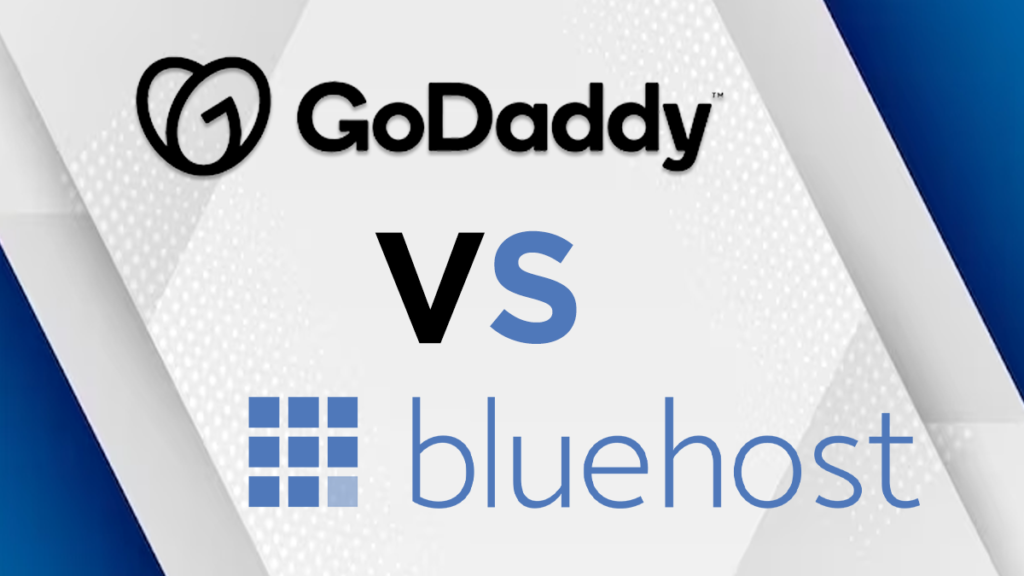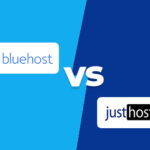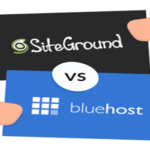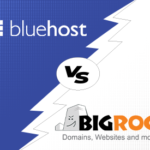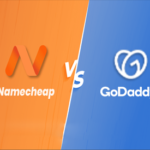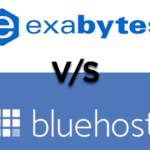In this comparison between Bluehost vs GoDaddy, we’ll determine which hosting provider offers superior services. We comprehensively evaluated their speed, reliability, user-friendliness, security, and customer support. By the end of this article, you’ll clearly understand the better option and the reasons behind it.
Bluehost has garnered mixed reviews within the web hosting community. Despite being a major player in the industry, it has received both praise and criticism. The company continually enhances its user interface, introducing new and improved features, all while maintaining budget-friendly pricing. However, some users criticize it for embodying the characteristics of a large corporation primarily focused on profit.
GoDaddy, predominantly renowned for its domain registration services, doesn’t advertise its hosting offerings as prominently. Nevertheless, it contributes significantly to the company’s overall revenue. Could it be that GoDaddy’s web hosting services are an underrated gem waiting to be discovered?
Undoubtedly, both companies achieved prominence through strategic efforts rather than mere chance. Now, let’s delve into which industry giants emerge as the superior choice.
Bluehost vs. GoDaddy: Quick Overview
Bluehost vs GoDaddy both stand as prominent figures in the web hosting realm. Bluehost accommodates over 2 million websites, while GoDaddy caters to over 5 million. Both are recognized for their budget-friendly pricing, particularly in the initial year of service.
They offer complimentary secure socket layer (SSL) certificates, employ the widely adopted cPanel control panel for hosting management, provide user-friendly website building tools, ensure swift uptimes, and back their services with a 30-day money-back guarantee.
Ease of Use
Since only some people are tech-savvy, navigating the complexities of website hosting can be difficult. Therefore, having an intuitive interface is essential. Fortunately, both hosting companies include the well-liked cPanel control panel, renowned for being simple and intuitive.
The cPanel from Bluehost has a clear, traditional layout with a well-organized backend shown in tabs. GoDaddy’s cPanel, on the other hand, is slick and uncomplicated. However, it can get daunting if you’re running several websites.
GoDaddy is your best bet if you’re a newcomer seeking absolute simplicity for a short-term project. If you don’t make any big modifications in the future, you can choose the platform. In the meantime, Bluehost is the way to go for a long-term project that needs a slick control interface and superior features for scaling.
Pricing Plan
At first glance, Bluehost’s pricing may appear slightly higher, commencing at $2.95 monthly. On the other hand, GoDaddy’s most economical plan initially starts at $2.99 per month, but this rate is applicable for only one year. If you opt for a regular 3-year billing cycle, it rises to $5.99 per month.
However, the pricing landscape shifts in other plan tiers as well. GoDaddy’s shared hosting plans can go as high as $14.99 monthly, whereas Bluehost caps at $13.95 monthly. Additionally, Bluehost offers more favorable pricing for its mid-range plans.
Since shared hosting is most users’ primary choice, I’ll focus exclusively on this aspect.
Both providers impose a one-website limit on their entry-level plans and throw in complimentary domain registration for the first year. Furthermore, they both offer unmetered bandwidth. However, the similarities end there.
Bluehost’s Basic plan ($2.95 per month) provides 50GB of SSD storage, a free SSL certificate, and up to 5 email accounts.
In contrast, GoDaddy’s Economy plan ($2.99 monthly) provides 100GB of storage and includes one Microsoft 365 mailbox for the initial year.
Customer Support
Having reliable help and support is crucial when it comes to hosting. While issues may not arise frequently, having technical experts in your corner is invaluable when they do.
Both Bluehost and GoDaddy excel at offering comprehensive support options, including knowledge centers, live chat, and round-the-clock phone assistance. For the most common issues, these resources are likely to suffice.
Bluehost’s knowledge center is slightly more extensive overall. However, GoDaddy’s knowledge center is also valuable. Moreover, if you need help finding the information, both providers boast such a wide user base that someone, somewhere, has likely encountered and shared a solution to the same problem online.
The noteworthy distinction is that Bluehost provides support tickets, a feature not offered by GoDaddy. There are moments when nothing beats personalized attention, and having this option is a definite advantage. In this category, the competition is close between GoDaddy vs Bluehost, and there are additional significant differences to consider when comparing these two hosting providers.
Performance
In cases of high site traffic, GoDaddy has shown longer response times for page load requests than Bluehost. Testing with low-traffic sites revealed that Bluehost achieved a load time of under 2.4 seconds, whereas GoDaddy exceeded 2.6 seconds for the same task.
Bluehost operates its servers on AMD power centers, while GoDaddy offers Intel Core i7 processors. Both platforms deliver commendable performance for their respective websites.
Ensuring the continuous availability of a website and its associated features is crucial for the success of any online enterprise.
Similar to many hosting providers, Bluehost offers a 99.9% uptime guarantee. However, specific details regarding potential credits in the event of non-compliance are not provided. If you choose to cancel or withdraw your account due to a breach of the agreement, no fees will be incurred, and you’ll receive a refund for the unused portion of your plan.
GoDaddy commits to a minimum of 99.9% uptime for all websites utilizing its services. Notably, you can receive credit towards your plan if the company fails to meet this guarantee. The maximum credit available is 5% of your monthly fee, though it’s important to note that this is not a refund. Instead, it’s a credit that can be used exclusively to purchase other products from GoDaddy’s selection.
Final Thoughts
When it comes down to it, definitively declaring the superior hosting provider is challenging. Admittedly, Bluehost is slightly advantageous over GoDaddy in many factors we assessed. Nevertheless, most of these differences are relatively minor.
Ultimately, the choice of provider hinges on your specific needs. Bluehost stands out with its exceptional hosting plans at budget-friendly rates, making it an ideal choice for those looking to establish a business website, blog, or e-commerce platform.
As an endorsed WordPress partner, Bluehost is the top recommendation for creating a WordPress website. However, it’s important to be mindful of potential higher renewal costs.


